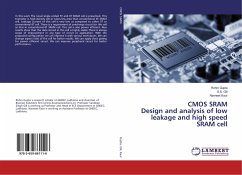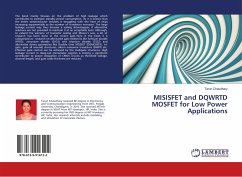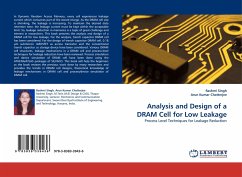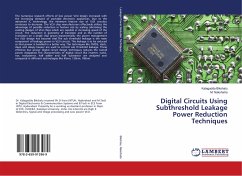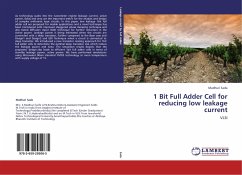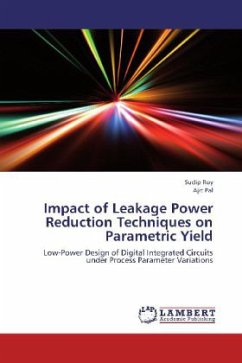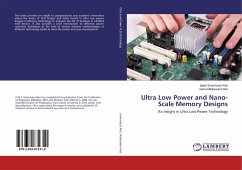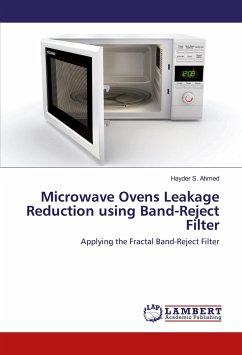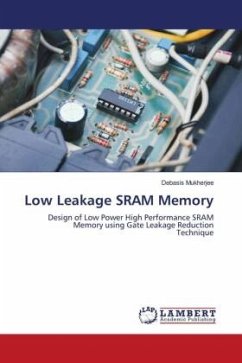
Low Leakage SRAM Memory
Design of Low Power High Performance SRAMMemory using Gate Leakage ReductionTechnique
Versandkostenfrei!
Versandfertig in 6-10 Tagen
29,99 €
inkl. MwSt.

PAYBACK Punkte
15 °P sammeln!
I present some techniques to decrease the gate and other leakage dissipation in Deep Sub-Micron SRAM memories. This book reviews detail SRAM operations. This book also reviews various transistor intrinsic leakage mechanisms, including weak inversion, drain-induced barrier lowering, gate-induced drain leakage, and gate oxide tunneling. Finally, the book explores different circuit techniques to reduce the leakage power consumption. The W/L ratios are calculated from the equations of current in transistors (Linear and Saturation mode) for smooth read-write operation of both 0 and 1. I use W1/W3 =...
I present some techniques to decrease the gate and other leakage dissipation in Deep Sub-Micron SRAM memories. This book reviews detail SRAM operations. This book also reviews various transistor intrinsic leakage mechanisms, including weak inversion, drain-induced barrier lowering, gate-induced drain leakage, and gate oxide tunneling. Finally, the book explores different circuit techniques to reduce the leakage power consumption. The W/L ratios are calculated from the equations of current in transistors (Linear and Saturation mode) for smooth read-write operation of both 0 and 1. I use W1/W3 = 1.5 and W4/W6 = 1.5. I first designed conventional SRAM memory and observed leakage current in various technology. In 90 nm technology conventional SRAM shows a leakage current of 1.87nA at steady state. Data retention gated-ground cache (DGR-cache) method reduces the leakage current to 100pA. Drowsy cache method reduces the leakage current to 84pA.




